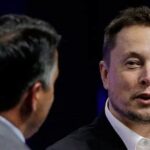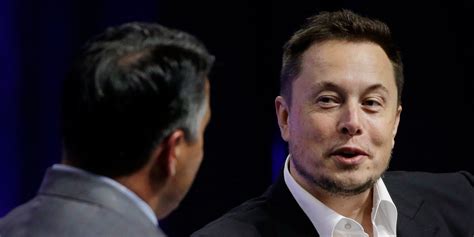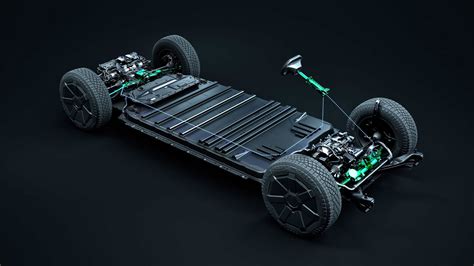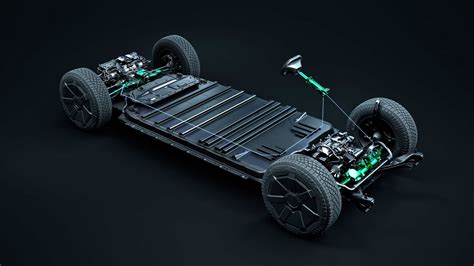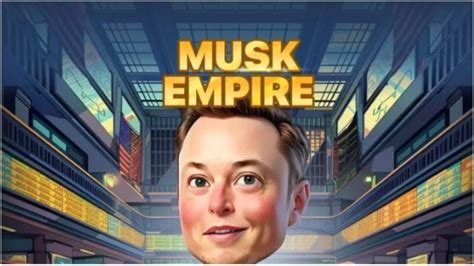
A former Tesla executive has delivered a stark assessment of the electric vehicle giant’s future, suggesting it could be “game over” for Elon Musk’s empire. Steven Henn, who spent over five years at Tesla managing energy and charging infrastructure, expressed concerns in a recent interview about the company’s strategic direction, competitive pressures, and internal culture.
Henn, now an investor in climate technology, contends that Tesla’s dominance in the EV market is increasingly threatened by both established automakers and agile startups rapidly innovating and gaining market share. He highlighted issues such as Tesla’s perceived technological stagnation, increasing competition from other EV manufacturers, and the potential impact of internal management issues.
Henn’s Departure and Background
Steven Henn’s tenure at Tesla spanned from 2016 to 2021. During that time, he played a key role in scaling Tesla’s energy and charging infrastructure, overseeing significant expansion projects and contributing to the company’s overall growth strategy in the energy sector. His departure from Tesla in 2021 marked a transition into venture capital, where he now focuses on investing in climate technology startups.
His departure was motivated by a desire to explore new opportunities in the rapidly evolving climate tech landscape and to leverage his experience at Tesla to support innovative companies addressing critical environmental challenges.
Tesla’s Stagnation and Competitive Landscape
Henn’s critique centers on the idea that Tesla, once the undisputed leader in electric vehicle technology, has become complacent and slow to innovate. He argues that while Tesla initially set the standard for EVs, other manufacturers have caught up and are now offering compelling alternatives with superior features and performance.
“Tesla’s competitors are simply building better cars,” Henn stated in the interview. He pointed to the rapid advancements in battery technology, charging infrastructure, and vehicle design being made by companies like Rivian, Lucid, and traditional automakers such as Ford and General Motors. These competitors are not only matching Tesla’s capabilities but, in some cases, surpassing them.
One of the critical areas Henn highlights is the improvement in battery technology. While Tesla has historically held an advantage in battery range and efficiency, competitors are closing the gap by partnering with leading battery suppliers and investing in their own research and development. This increased competition in battery technology directly impacts Tesla’s ability to maintain its edge.
Furthermore, Henn notes the proliferation of charging infrastructure as a key factor leveling the playing field. Tesla’s Supercharger network was once a significant differentiator, providing Tesla owners with a reliable and convenient charging solution. However, the expansion of public charging networks, supported by government initiatives and private investment, means that non-Tesla EV owners now have access to a wider range of charging options. This reduces the reliance on Tesla’s proprietary network and diminishes one of Tesla’s key competitive advantages.
Henn believes Tesla’s failure to adapt quickly to these changing dynamics could lead to a significant erosion of its market share. He suggests that Tesla needs to refocus on innovation and address the shortcomings in its product offerings to remain competitive in the long term.
Internal Culture and Management Issues
Beyond technological and competitive challenges, Henn also raises concerns about Tesla’s internal culture and management style, particularly under Elon Musk’s leadership. He suggests that Musk’s sometimes erratic behavior and autocratic decision-making can stifle innovation and create a toxic work environment.
Henn implies that Tesla’s culture, while initially driven by a sense of mission and urgency, has become increasingly demanding and less collaborative. He suggests that the pressure to meet ambitious targets and the fear of reprisal for dissenting opinions can discourage employees from taking risks and proposing new ideas.
“There’s a lot of fear in that organization, and that fear prevents people from speaking up,” Henn claimed. This fear, according to Henn, can lead to groupthink and a lack of critical evaluation of strategic decisions. He believes that a more open and collaborative culture is essential for fostering innovation and attracting top talent.
Moreover, Henn raises questions about Musk’s ability to effectively manage multiple companies simultaneously. As the CEO of Tesla, SpaceX, and now X (formerly Twitter), Musk faces increasing demands on his time and attention. Henn suggests that Musk’s divided focus could detract from Tesla’s strategic priorities and hinder its ability to respond quickly to competitive threats.
Henn also touches on the high turnover rate among Tesla’s executive ranks as a symptom of deeper cultural and management issues. He points to the departure of several key leaders in recent years as evidence of internal instability and a lack of long-term vision. These departures, he argues, can disrupt ongoing projects, erode institutional knowledge, and create uncertainty among employees.
Tesla’s Response and Counterarguments
Tesla has not directly responded to Henn’s specific claims. However, the company has consistently defended its track record of innovation and its commitment to pushing the boundaries of electric vehicle technology. Tesla executives often highlight the company’s ongoing investments in battery research, autonomous driving, and manufacturing efficiency as evidence of its continued leadership in the EV market.
Tesla also emphasizes its strong financial performance and its ability to generate consistent profits, despite increasing competition. The company points to its growing global sales and its expansion into new markets as signs of its resilience and adaptability.
Furthermore, Tesla supporters argue that Elon Musk’s leadership, while unconventional, is essential for driving innovation and challenging conventional thinking. They credit Musk’s vision and determination for Tesla’s success in disrupting the automotive industry and accelerating the transition to sustainable transportation.
However, critics argue that Tesla’s success has been built on a combination of first-mover advantage, government subsidies, and regulatory credits. They contend that as the EV market matures and competition intensifies, Tesla will face increasing pressure to justify its high valuation and maintain its market share.
The Road Ahead for Tesla
The future of Tesla remains uncertain. While the company faces significant challenges, it also possesses substantial strengths, including a strong brand, a loyal customer base, and a vast network of charging infrastructure.
To maintain its leadership in the EV market, Tesla will need to address the concerns raised by Henn and others regarding its technological stagnation, internal culture, and strategic direction. This may require a renewed focus on innovation, a more collaborative management style, and a willingness to adapt to the changing dynamics of the automotive industry.
Tesla also needs to navigate the complex regulatory landscape and address concerns about its environmental impact. As governments around the world implement stricter emission standards and incentivize the adoption of electric vehicles, Tesla will need to comply with these regulations and demonstrate its commitment to sustainability.
Ultimately, Tesla’s success will depend on its ability to execute its strategic vision and deliver innovative products that meet the evolving needs of consumers. Whether Elon Musk’s empire can adapt and thrive in the face of increasing competition remains to be seen.
Expanded Context
Tesla’s journey from a niche automaker to a global EV leader has been marked by periods of rapid growth, technological breakthroughs, and intense scrutiny. The company’s success has been largely attributed to its early focus on electric vehicle technology, its innovative battery solutions, and its charismatic CEO, Elon Musk.
However, Tesla’s rise has not been without its challenges. The company has faced production delays, quality control issues, and controversies surrounding Musk’s leadership. As the EV market becomes more crowded and competitive, Tesla faces increasing pressure to maintain its edge and deliver on its ambitious promises.
The entry of traditional automakers into the EV market represents a significant shift in the competitive landscape. Companies like Ford, General Motors, and Volkswagen are investing billions of dollars in electric vehicle technology and are leveraging their existing manufacturing infrastructure and brand recognition to compete with Tesla.
These traditional automakers are not only offering electric versions of their existing models but are also developing entirely new EV platforms and technologies. This increased competition is driving down prices and forcing Tesla to respond with its own innovations and cost-cutting measures.
Furthermore, the rise of new EV startups like Rivian and Lucid is adding to the competitive pressure. These companies are focused on specific niches within the EV market and are offering unique products and experiences that appeal to different customer segments.
Rivian, for example, is targeting the adventure and outdoor recreation market with its electric trucks and SUVs. Lucid is focused on the luxury EV segment with its high-performance sedans and advanced technology. These startups are challenging Tesla’s dominance in their respective niches and are forcing Tesla to broaden its product offerings and target new customer segments.
In addition to competition from other automakers, Tesla also faces challenges related to its supply chain, its manufacturing processes, and its regulatory compliance. The global shortage of semiconductors has disrupted Tesla’s production and has led to delays in vehicle deliveries. Tesla is also facing scrutiny from regulators regarding its environmental practices and its safety record.
To overcome these challenges, Tesla needs to strengthen its supply chain, improve its manufacturing processes, and enhance its regulatory compliance. The company is investing in new factories and technologies to increase its production capacity and improve its efficiency. Tesla is also working with suppliers to secure access to critical components and materials.
Tesla’s ability to navigate these challenges will be crucial for its long-term success. The company needs to continue to innovate, improve its products, and adapt to the changing dynamics of the EV market. Whether Tesla can maintain its leadership in the face of increasing competition and regulatory scrutiny remains to be seen.
Elon Musk’s Influence and Impact
Elon Musk’s influence on Tesla cannot be overstated. As the company’s CEO and largest shareholder, Musk has played a central role in shaping Tesla’s vision, strategy, and culture. His leadership has been both praised and criticized, but there is no doubt that he has been a driving force behind Tesla’s success.
Musk’s vision for Tesla extends beyond electric vehicles. He sees Tesla as a company that is fundamentally transforming the energy and transportation industries. His goal is to accelerate the transition to sustainable energy and to make electric vehicles accessible to the masses.
To achieve this vision, Musk has pushed Tesla to develop innovative technologies, build a vast charging infrastructure, and expand into new markets. He has also fostered a culture of innovation and risk-taking within the company.
However, Musk’s leadership style has also been criticized. Some observers have described him as being autocratic and demanding, and they have questioned his ability to effectively manage multiple companies simultaneously.
Musk’s sometimes erratic behavior and his controversial statements on social media have also raised concerns among investors and analysts. However, Musk’s supporters argue that his unconventional approach is essential for driving innovation and challenging conventional thinking.
Ultimately, Musk’s legacy will depend on his ability to deliver on his ambitious promises and to guide Tesla through the challenges ahead. Whether he can continue to inspire and motivate his employees and whether he can maintain Tesla’s leadership in the face of increasing competition remains to be seen.
Future Projections and Market Dynamics
The electric vehicle market is expected to continue to grow rapidly in the coming years, driven by increasing consumer demand, government incentives, and technological advancements. Analysts predict that electric vehicles will account for a significant share of global vehicle sales by the end of the decade.
This growth will create both opportunities and challenges for Tesla. On the one hand, the expanding market will provide Tesla with a larger customer base and the potential for increased sales. On the other hand, the increasing competition will put pressure on Tesla to innovate and maintain its market share.
Tesla’s success in the future will depend on its ability to develop new products, improve its manufacturing processes, and expand into new markets. The company is currently working on several new models, including the Cybertruck and the Roadster, and it is investing in new factories in China and Germany.
Tesla is also exploring new business models, such as energy storage and autonomous driving. The company’s Powerwall and Megapack products are gaining traction in the energy storage market, and its Autopilot and Full Self-Driving systems are attracting increasing attention from consumers and regulators.
However, Tesla faces significant challenges in these areas. The development of autonomous driving technology has proven to be more difficult and time-consuming than initially anticipated, and the regulatory landscape for autonomous vehicles remains uncertain.
Tesla also faces competition from other companies in the energy storage market. Companies like LG Chem and Panasonic are offering competing products and are leveraging their existing relationships with utilities and energy providers.
To succeed in these new business areas, Tesla needs to continue to invest in research and development, build strong partnerships, and navigate the complex regulatory landscape. The company’s ability to adapt and innovate will be crucial for its long-term success.
Financial Performance and Investor Confidence
Tesla’s financial performance has been a subject of intense scrutiny in recent years. The company has experienced periods of rapid growth and profitability, but it has also faced challenges related to production delays, quality control issues, and increased competition.
Tesla’s stock price has been highly volatile, reflecting the uncertainty surrounding the company’s future prospects. Investors have been divided on Tesla’s valuation, with some arguing that it is overvalued and others believing that it has the potential to grow significantly in the coming years.
Tesla’s financial performance is closely tied to its ability to increase production, improve its profit margins, and maintain its market share. The company’s ability to achieve these goals will depend on its success in developing new products, improving its manufacturing processes, and managing its costs.
Tesla’s financial performance is also affected by external factors, such as changes in government regulations, fluctuations in commodity prices, and shifts in consumer demand. The company’s ability to navigate these external factors will be crucial for its long-term financial stability.
Investors are also closely watching Tesla’s cash flow and its ability to fund its ambitious growth plans. The company is investing heavily in new factories, research and development, and new business ventures. These investments require significant capital, and Tesla needs to ensure that it has access to sufficient funding to support its growth.
Tesla’s ability to maintain investor confidence will depend on its ability to deliver consistent financial results and to communicate its strategic vision clearly to the market. The company’s leadership team needs to address the concerns raised by investors and analysts and to demonstrate that Tesla is well-positioned to succeed in the long term.
The Ethical and Social Implications
Tesla’s impact extends beyond its financial performance and its technological innovations. The company’s actions have significant ethical and social implications, particularly in areas such as environmental sustainability, labor practices, and consumer safety.
Tesla has positioned itself as a leader in environmental sustainability, and its electric vehicles are seen as a key component of the transition to a cleaner and more sustainable transportation system. However, Tesla’s environmental impact is not limited to its vehicles. The company’s manufacturing processes, its supply chain, and its battery disposal practices also have environmental consequences.
Tesla needs to ensure that its operations are environmentally responsible and that it is taking steps to minimize its impact on the planet. The company needs to invest in sustainable manufacturing processes, to source materials responsibly, and to develop effective battery recycling programs.
Tesla’s labor practices have also been the subject of scrutiny. Some reports have alleged that Tesla’s factory workers face long hours, low wages, and unsafe working conditions. Tesla needs to ensure that its workers are treated fairly and that they have access to safe and healthy working conditions.
Tesla’s consumer safety practices are also under the microscope. The company’s Autopilot and Full Self-Driving systems have been involved in several accidents, raising questions about the safety and reliability of these technologies. Tesla needs to prioritize safety and to ensure that its autonomous driving systems are thoroughly tested and validated before they are deployed on public roads.
Tesla’s ethical and social responsibilities extend beyond its immediate operations. The company has a responsibility to contribute to the well-being of society as a whole and to promote values such as environmental sustainability, social justice, and consumer safety. Tesla’s ability to fulfill these responsibilities will be crucial for its long-term success and its reputation as a responsible corporate citizen.
Frequently Asked Questions (FAQs)
1. What are Steven Henn’s main concerns about Tesla’s future?
- Steven Henn believes Tesla is facing increasing competition, has shown signs of technological stagnation, and suffers from internal cultural and management issues that could jeopardize its market leadership. He points to other manufacturers building “better cars” and internal fear preventing employees from speaking up.
2. How does Henn view Tesla’s competitive position in the EV market?
- Henn argues that Tesla’s competitors are catching up and, in some cases, surpassing Tesla in areas like battery technology, charging infrastructure, and vehicle design. He suggests Tesla has become complacent and needs to refocus on innovation to remain competitive.
3. What cultural and management issues does Henn highlight at Tesla?
- Henn points to a culture of fear and autocratic decision-making under Elon Musk, which he believes stifles innovation and creates a toxic work environment. He also mentions the high turnover rate among Tesla’s executives as a symptom of these issues.
4. Has Tesla responded to these specific concerns raised by Henn?
- Tesla has not directly responded to Henn’s specific claims. The company generally defends its commitment to innovation, its strong financial performance, and its market leadership in the EV sector.
5. What does Henn’s assessment mean for the future of Tesla and Elon Musk’s leadership?
- Henn’s assessment suggests that Tesla faces significant challenges that could threaten its dominance in the EV market. He implies that Tesla needs to address its technological stagnation, improve its internal culture, and adapt to the changing dynamics of the automotive industry to maintain its competitive edge. The future of Tesla and Elon Musk’s leadership hinges on how effectively the company can respond to these challenges.
